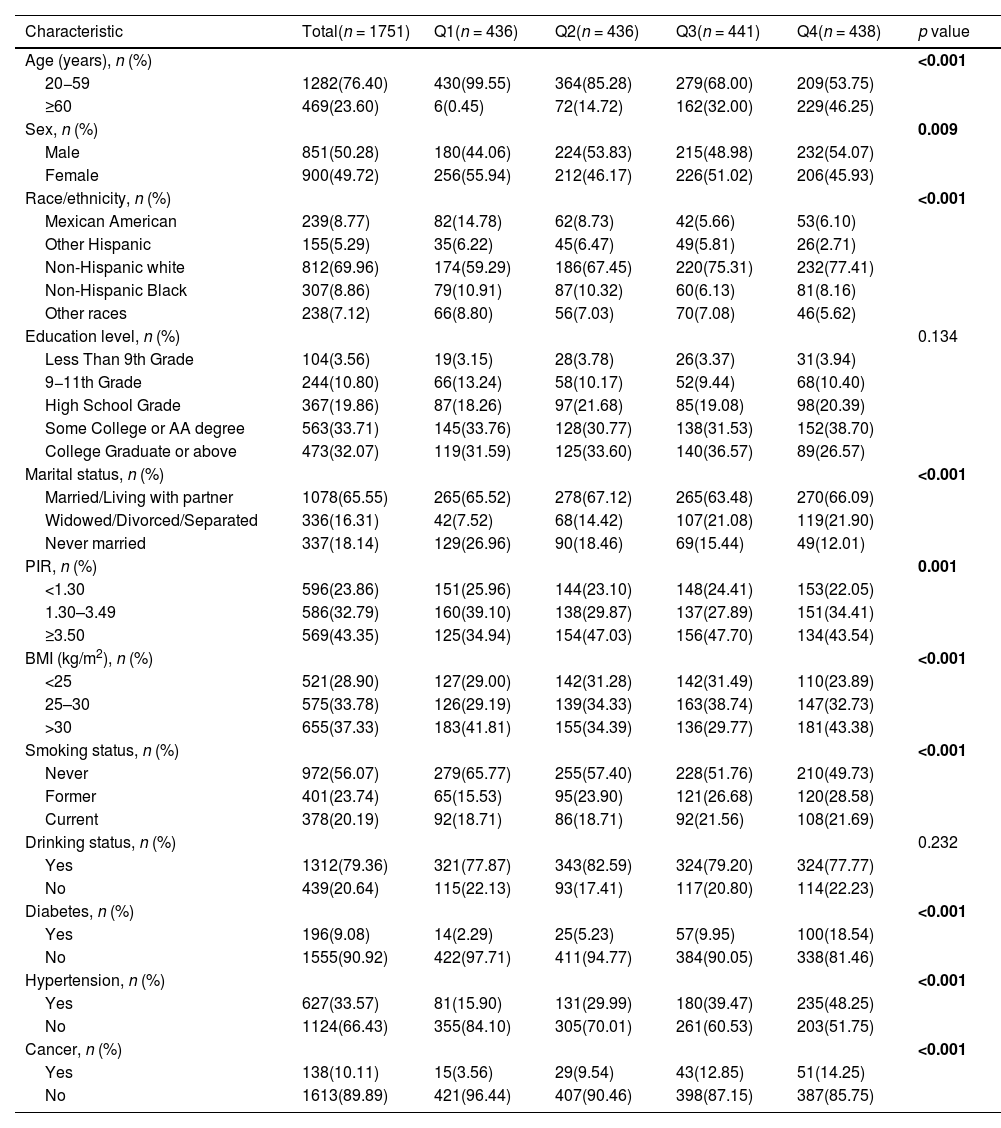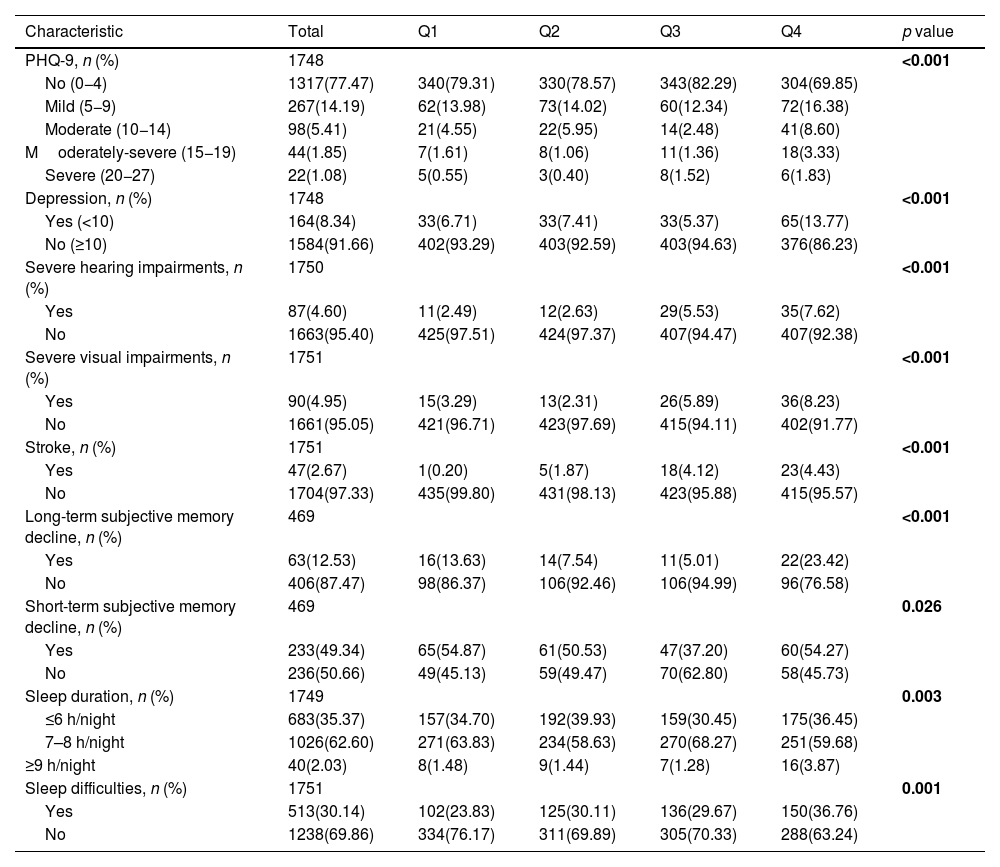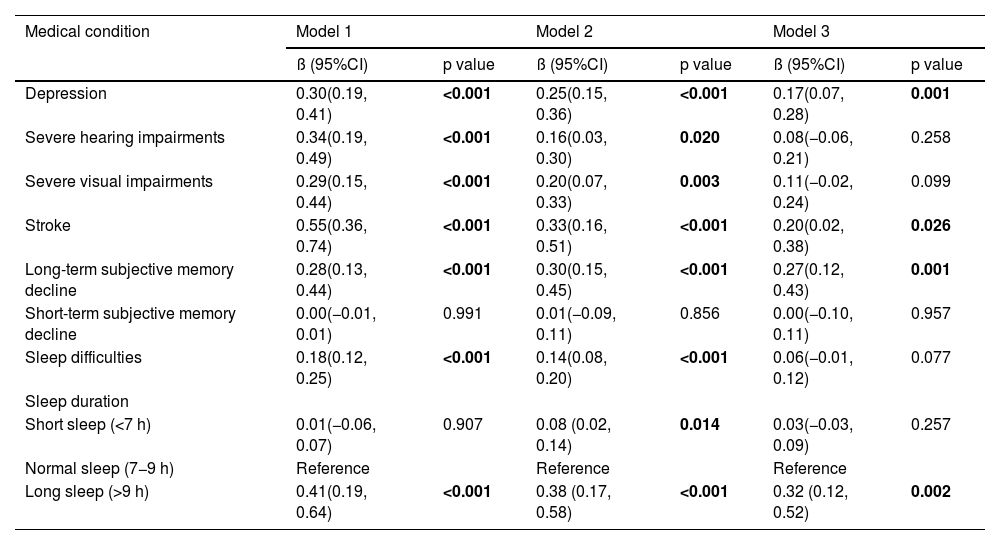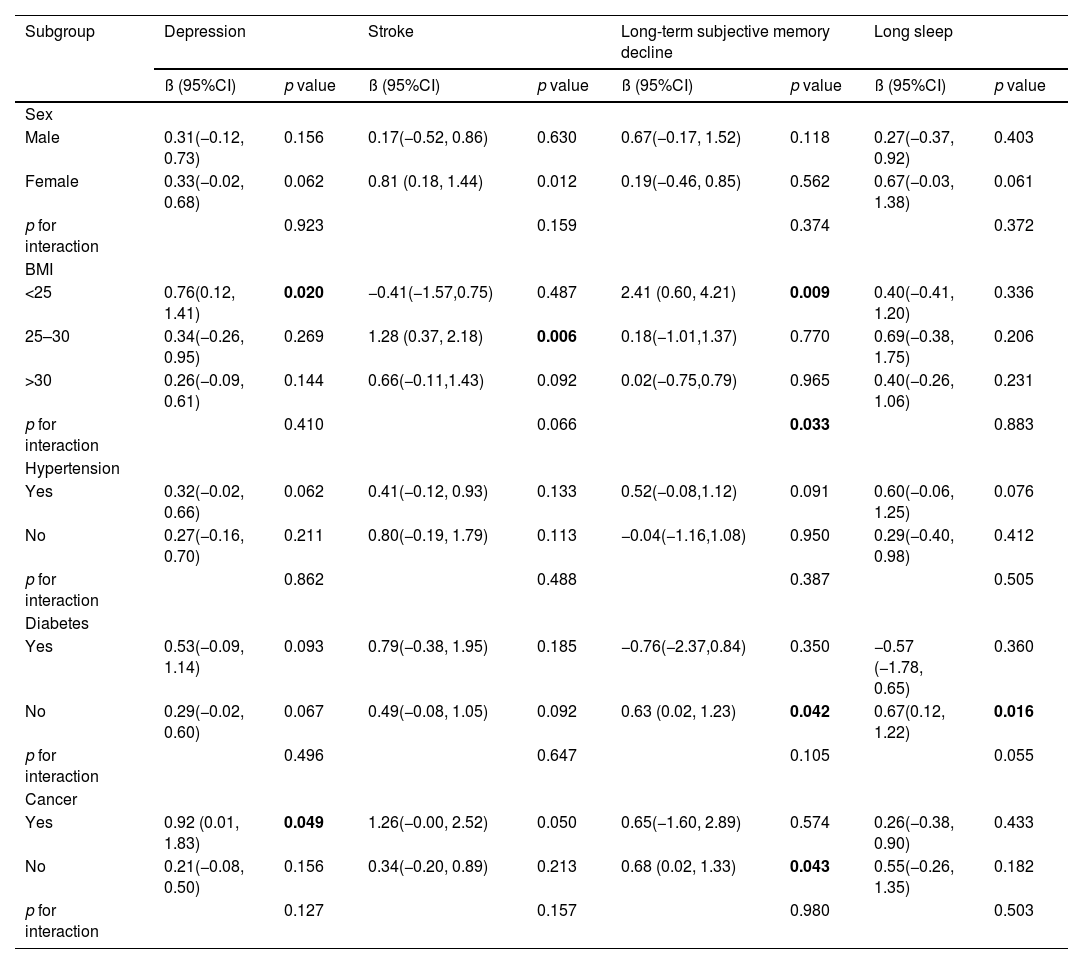While increased neurofilament light chain (NfL) in serum concentrations are linked to the progression of several neurological conditions, their distribution and implications within the general adult population remain largely unexplored. The current research aims to clarify the relationship between serum NfL levels and neurological disorders in a broad and representative population sample.
MethodsWe utilized information gathered from 1751 adults involved in the 2013–2014 cycle of the National Health and Nutrition Examination Survey . Our analytical approach encompassed logistic regression, smoothed curve fitting, and subgroup analyses to identify potential correlations between serum NfL levels and neurological conditions, such as depression, severe hearing and visual impairments, stroke, subjective memory deficits, and sleep problems.
ResultsAfter adjusting for all confounders, we found that higher serum NfL levels were significantly associated with increased risks of depression, stroke, subjective memory deficits, and longer sleep duration (p < 0.05). Subgroup analyses supported these findings. Additionally, BMI significantly influenced the relationship between serum NfL levels and long-term subjective memory decline.
ConclusionOur research shows that higher serum NfL levels are strongly related to an elevated risk for several neurological disorders. These findings highlight the role of serum NfL serving as a critical marker for early detection and monitoring of neurological conditions, emphasizing its importance in both clinical and public health settings.
Mientras que el aumento de las concentraciones de la cadena ligera de neurofilamentos (NfL) en suero está relacionado con la progresión de varias afecciones neurológicas, su distribución e implicaciones dentro de la población adulta general siguen siendo en gran parte inexploradas. La presente investigación tiene como objetivo aclarar la relación entre los niveles de NfL en suero y los trastornos neurológicos en una muestra amplia y representativa de la población.
MétodosUtilizamos información recopilada de 1751 adultos involucrados en el ciclo 2013-2014 de la Encuesta Nacional de Salud y Nutrición . Nuestro enfoque analítico incluyó regresión logística, ajuste de curvas suavizadas y análisis de subgrupos para identificar posibles correlaciones entre los niveles de NfL en suero y condiciones neurológicas, incluyendo depresión, discapacidades auditivas y visuales severas, accidente cerebrovascular, déficits de memoria subjetivos y problemas de sueño.
ResultadosDespués de ajustar por todos los factores de confusión, encontramos que mayores concentraciones de NfL en suero se asociaban significativamente con un mayor riesgo de depresión, accidente cerebrovascular, déficits de memoria subjetivos y mayor duración del sueño (p < 0,05). Los análisis de subgrupos respaldaron estos hallazgos. Además, el IMC influyó significativamente en la relación entre los niveles de NfL en suero y los deterioro de la memoria subjetiva a largo plazo.
ConclusiónNuestra investigación muestra que niveles más altos de NfL en suero están firmemente relacionados con un mayor riesgo de varios trastornos neurológicos. Estos hallazgos destacan el papel del NfL en suero como un marcador crítico para la detección temprana y el monitoreo de condiciones neurológicas, enfatizando su importancia tanto en entornos clínicos como de salud pública.
Article
Diríjase desde aquí a la web de la >>>FESEMI<<< e inicie sesión mediante el formulario que se encuentra en la barra superior, pulsando sobre el candado.
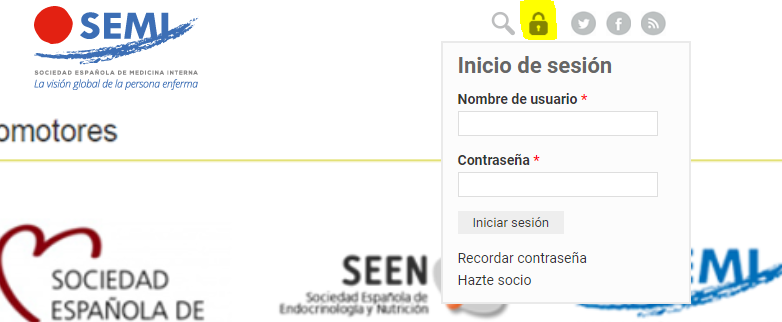
Una vez autentificado, en la misma web de FESEMI, en el menú superior, elija la opción deseada.
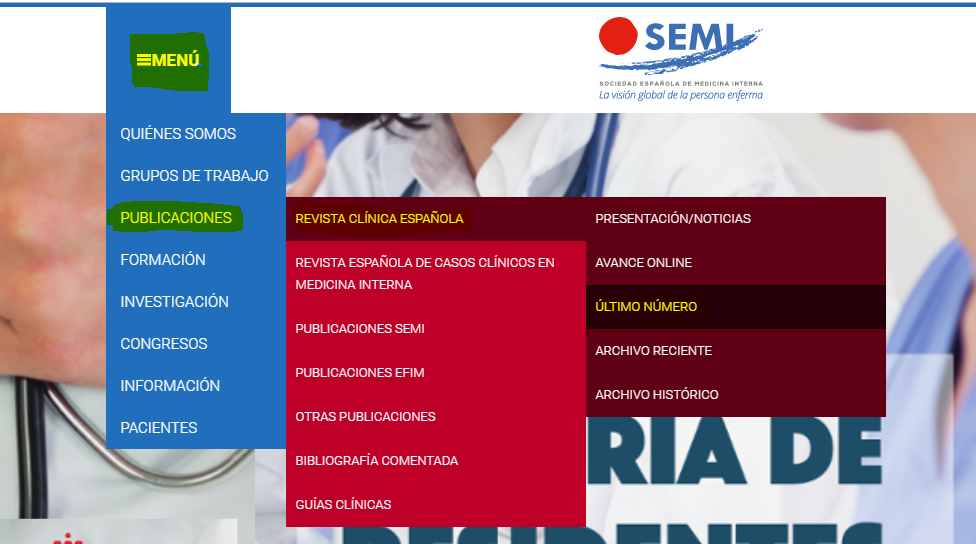
>>>FESEMI<<<



